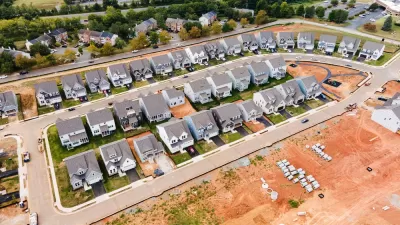According to the Urban Institute's Housing Affordability for Renters Index, the number of renters who can afford to buy a home in their metropolitan area is generally increasing when compared to the housing bubble of the mid-2000s.

Laurie Goodman and John Zhu share news of a recently published Housing Affordability for Renters Index (HARI).
Goodman, Zhu, and colleagues at the Urban Institute created the HARI in March 2018, and have updated the index for 2019.
"The HARI improves upon other affordability measures by focusing exclusively on renters’ ability to buy homes," according to the post. "Moreover, unlike other indexes which focus on the average income, HARI evaluates the whole distribution of renter incomes in an area."
The report examines homeownership affordability for renters in 100 U.S. metropolitan statistical areas, using 2017 American Community Survey and the 2017 Home Mortgage Disclosure Act data.
The report summarizes its findings thusly: "For the nation as a whole in 2017, 27 percent of renters earned at least as much as households who recently purchased a home using a mortgage, a number similar to 2016. For most MSAs…affordability in 2017 was higher than it was in 2006, lower than it was in 2009, and similar to how it was in 2016."
For additional historical perspective: "For the 100 most-populous MSAs, houses were more affordable to local renters in 2017 than they were in 2006. In 2006, at the height of the housing bubble, fewer renters had the income to purchase a home. We observe an average of 6 percent more renters between 2006 and 2017 had the income to purchase a house."
FULL STORY: Housing Affordability for Renters Index: Local Perspective and Migration

Study: Maui’s Plan to Convert Vacation Rentals to Long-Term Housing Could Cause Nearly $1 Billion Economic Loss
The plan would reduce visitor accommodation by 25,% resulting in 1,900 jobs lost.

North Texas Transit Leaders Tout Benefits of TOD for Growing Region
At a summit focused on transit-oriented development, policymakers discussed how North Texas’ expanded light rail system can serve as a tool for economic growth.

Why Should We Subsidize Public Transportation?
Many public transit agencies face financial stress due to rising costs, declining fare revenue, and declining subsidies. Transit advocates must provide a strong business case for increasing public transit funding.

A Visual Celebration of Manhattan’s Chinatown Elder Community, Through Food
Lanterns, cafeteria trays, and community connection take center stage in this stunning photo essay.

How to Make US Trains Faster
Changes to boarding platforms and a switch to electric trains could improve U.S. passenger rail service without the added cost of high-speed rail.

Columbia’s Revitalized ‘Loop’ Is a Hub for Local Entrepreneurs
A focus on small businesses is helping a commercial corridor in Columbia, Missouri thrive.
Urban Design for Planners 1: Software Tools
This six-course series explores essential urban design concepts using open source software and equips planners with the tools they need to participate fully in the urban design process.
Planning for Universal Design
Learn the tools for implementing Universal Design in planning regulations.
City of Santa Clarita
Ascent Environmental
Institute for Housing and Urban Development Studies (IHS)
City of Grandview
Harvard GSD Executive Education
Toledo-Lucas County Plan Commissions
Salt Lake City
NYU Wagner Graduate School of Public Service





























